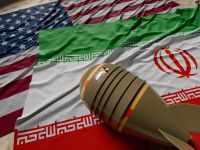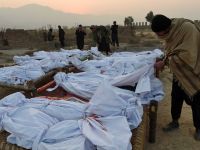The major event which has marked the two last weeks in Morocco is undoubtedly the oil and gas finds announced by His Majesty on 20 August. As soon as the Sovereign announced that oil and gas deposits were discovered in the region of Talsinnt, in the south-east of the country, people began to talk about « the start of a new era » and about the realization of the « oil Eldorado » dream.
Telling the good news, His Majesty warned of the dangers of an economy based on the revenues of its natural resources only. However, there is much optimism about the good prospects such a “manna” could generate if it is well managed.
According to the latest details of the find delivered by Lone Star Energy, the company which made the discovery, analyses show that the SBK I oil well has a potential of reserves estimated at 50 to 100 million barrels. The next wells to drill are expected to have a flow of 2,500 to 5,000 barrels of oil equivalents per day, with reserves of 7.5 to 10 million barrels of oil equivalents for each well. Besides, the company is making a horizontal drill to determine the expanse of the oil basin.
It is also working on the lower Jurassic layer which is expected to contain 75 to 125 million barrels. Furthermore, the studies carried out on the Talsinnt site -extended over an area of 26,374 km- indicate probable reserves of 1 to 2 billion barrels of oil. According to the company's estimates, the reserves of the concessions held by Lone Star Energy up to now ( 3 onshore and 1 offshore, over an area of 27,250 Km2), are expected to be between 10 and 15 billion barrels of oil equivalents.
If these figures are right, and with continued search for the “black gold”, the country is very likely to achieve self-sufficiency in energy in the few coming years, and even to become an exporting country. However, patience is a virtue.
Real potential Soon after the find was announced and the first figures appeared, analysts cautioned that the country's hydrocarbons potential was difficult to predict from the results of one field. Other fields and areas are to be explored to confirm the real potential.
Some even go further to raise doubt about the figures issued by Lone Star Energy. This is the case for Mr. Abraham Serfaty, who has recently been appointed adviser to Ms Amina Benkhadra, the new managing director of ONAREP-the public body in charge of oil research and development. He suggests that, the figures announced by the Morocco-registered subsidiary of US-based Skidmore Energy, might only aim at increasing the company's share prices at the New York Stock Market.
Nevertheless, the discovery of oil and gas, is very likely to give a strong boost to the Kingdom's economy, and to raise hopes about a brighter future.
But the exploitation of the finds cannot start immediately. It will take some 3 to 5 years to see the SBK I oil marketed. And it will require more time to get it exported to other countries. In any case, once exploration is over, it will be necessary to provide the needed infrastructure for extracting and transporting oil and gas both to refineries and to ports.
The costs of exploitation and infrastructure are to be born, up to 25 percent, by the state, and to 75 percent by Lone Star Energy, as stipulated by the new hydrocarbons law. In return, the state will have right to 25 percent of the extracted oil and gas, while 75 percent will be owned by the company.
A growth engine No matter how, this “manna” should be managed in a rational way to make of it an engine for economic and social development rather than an obstacle for progress. For experience showed that plentiful natural resources do not necessarily lead to development, particularly if they are mismanaged.
This is the case for several oil and gas exporting countries, which although some of them might be rich, remained underdeveloped. It also applies to Morocco's phosphate resources which could have been used more efficiently to boost the economy. But the lessons of the past may be very useful this time. While announcing the discovery of the new sources of energy, His Majesty warned of the dangers of an income-based economy, and called for a more rational use of this new development tool.
If the said reserves are confirmed, the country is expected to save more than 10 billion DH currently spent on oil and gas imports. The cost of energy is likely to decrease, to the advantage of industries and individuals alike, unless in the case of a heavy taxation (strangely enough, two weeks after the announcement, oil prices went up, influenced by the trend of the international markets).
The finds would also create a significant number of job opportunities, which would in turn, contribute to reducing the rate of unemployment, particularly among the younger generation. Moreover, the regions where the oil and gas fields are discovered, such as Talsinnt, would receive a strong boost both on the economic and the social levels. The finds are also expected to attract more investors.
Hydrocarbons plan Given the importance of oil and gas as a source of energy and development, the ONAREP is currently preparing a development strategy in this sector. In an interview with the Moroccan economic weekly La Vie économique, Ms Benkhadra revealed some of the major guidelines. The Office aims at increasing the flow of investments in exploration and production in the fields of hydrocarbons and gas. It will also encourage increased drilling to confirm the country's potential. To do so, an “aggressive policy” for investment attraction, targeting both foreign and Moroccan investors, will be adopted. The Office will also continue signing survey agreements and oil agreements with the different companies with which it is presently negotiating.
Ms Benkhadra also announced that ONAREP is preparing for the launch of an invitation to bid for the offshore region of Safi-Rabat, extended over an area of 37,500 km2. She also stressed the importance of human resources, which need to be trained.
Finally, whether Morocco will join the OPEC club or not, the answer largely depends on the real volume of its oil and gas reserves, to be confirmed through further drilling. And when the first Moroccan oil barrels will appear on the world markets- also depends on the pace of exploration and exploitation. But certainly, this will require some years of sustained efforts to provide the necessary infrastructure. – (Finances News)
M. Nassil.>
© 2000 Mena Report (www.menareport.com)







